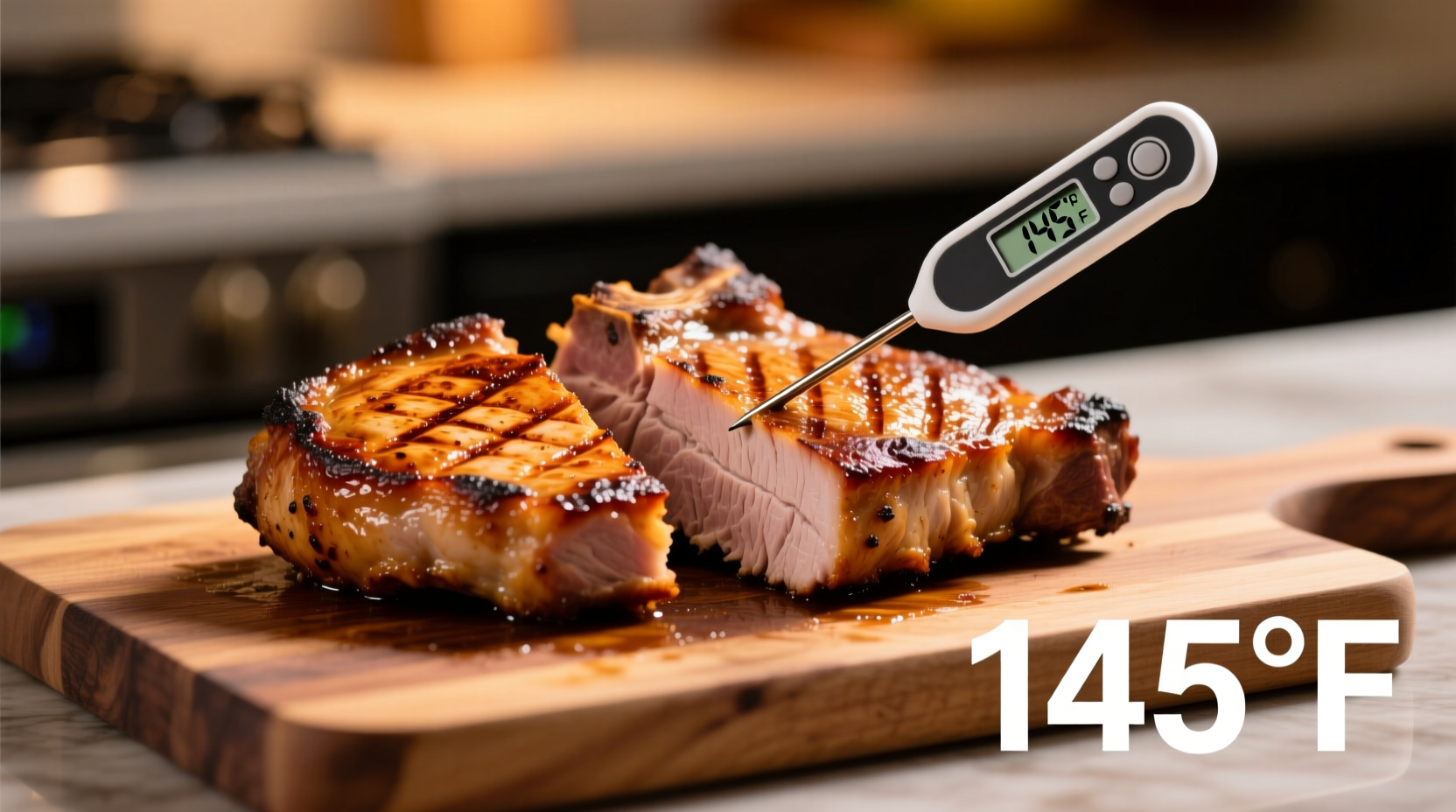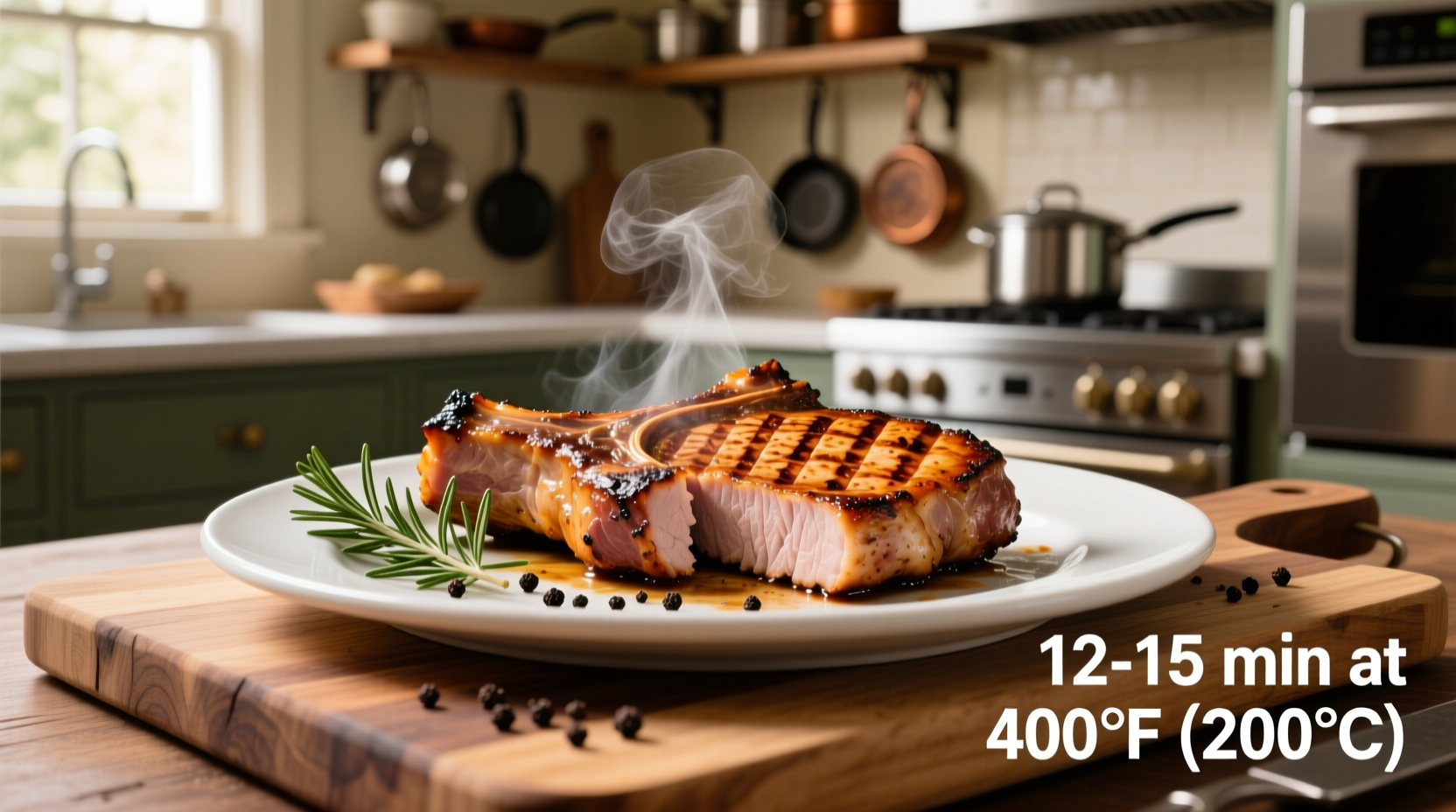Nothing beats a perfectly cooked pork chop with a golden crust and juicy interior. But getting that ideal texture without drying out the meat requires precise timing and temperature control. After years of testing various methods in professional and home kitchens, I've perfected a reliable oven-baking technique that works every time.
Why Oven Cooking Works Best for Pork Chops
Oven baking provides consistent, even heat that helps maintain moisture while creating a beautiful sear. Unlike stovetop cooking where timing is critical, the oven's gentle heat allows for more margin of error, especially for beginners. The USDA Food Safety and Inspection Service confirms that oven cooking is one of the most reliable methods for achieving safe internal temperatures without overcooking.
Key Factors That Determine Cooking Time
Three critical elements affect how long your pork chops need in the oven:
- Thickness - The single most important factor (1-inch vs. 1.5-inch can mean 5-7 minutes difference)
- Oven temperature - Higher temps cook faster but require closer monitoring
- Starting temperature - Chops straight from the fridge need 3-5 minutes longer than room-temperature meat
According to the National Pork Board's cooking guidelines, these variables interact in predictable ways that home cooks can master with proper reference points.
Exact Cooking Times for Perfect Pork Chops
Use this comprehensive reference chart as your starting point. Remember to always verify with a meat thermometer for food safety.
| Pork Chop Thickness | Oven Temperature | Approximate Cooking Time | Resting Time |
|---|---|---|---|
| 1 inch | 400°F | 15-20 minutes | 3 minutes |
| 1 inch | 375°F | 20-25 minutes | 3 minutes |
| 1.5 inches | 400°F | 20-25 minutes | 5 minutes |
| 1.5 inches | 375°F | 25-30 minutes | 5 minutes |
| Bone-in (1.5") | 400°F | 22-27 minutes | 5 minutes |

Step-by-Step Cooking Process
Follow these professional-tested steps for foolproof results every time:
- Prep your chops - Pat completely dry with paper towels (critical for browning)
- Season properly - Salt at least 45 minutes before cooking or right before baking
- Preheat oven - Always preheat to ensure accurate cooking times
- Sear first (optional but recommended) - 2 minutes per side in hot oil before transferring to oven
- Place on rack - Use a wire rack over a baking sheet for even air circulation
- Monitor temperature - Insert thermometer horizontally into thickest part
- Remove at 140°F - Temperature will rise 5 degrees during resting
- Rest properly - Tent loosely with foil for specified resting time
How to Verify Doneness Without Guessing
While timing provides a good reference, the only reliable method is checking internal temperature. The USDA updated its pork cooking guidelines in 2011, lowering the recommended safe temperature from 160°F to 145°F with a 3-minute rest period. This change, documented in the USDA Food Safety guidelines, prevents the dry, overcooked results that gave pork chops their bad reputation.
Visual cues can supplement thermometer readings:
- Juices should run clear, not pink
- Meat should feel firm but slightly springy when pressed
- No pink color remaining in the center (except for very thick cuts)
Common Mistakes That Ruin Pork Chops
Avoid these frequent errors that lead to dry, tough results:
- Skipping the rest period - Cutting too soon releases precious juices
- Not drying the surface - Moisture prevents proper browning
- Overcrowding the pan - Creates steam instead of sear
- Opening the oven too often - Each opening drops temperature significantly
- Using only timing without thermometer - Oven variations make timing alone unreliable
Special Considerations for Different Situations
Certain conditions require adjustments to standard cooking times:
- Frozen pork chops - Add 50% more cooking time and check temperature carefully
- Convection ovens - Reduce temperature by 25°F or shorten time by 15-20%
- Marinated chops - Sugar in marinades can cause faster browning; watch closely
- Cast iron cooking - Retains heat well; may need 2-3 minutes less cooking time
The Food Safety and Inspection Service emphasizes that these contextual factors significantly impact safe cooking outcomes, making thermometer use essential in non-standard situations.
Pro Tips for Juicy, Flavorful Results
Professional chefs use these techniques to elevate simple pork chops:
- Dry brine overnight - Salt chops 12-24 hours before cooking for deeper seasoning
- Use the carryover cooking principle - Remove at 140°F for perfect 145°F finish
- Add aromatics to the pan - Garlic, rosemary, or thyme enhance flavor during cooking
- Baste with butter - During last 5 minutes for extra richness
- Try reverse searing - For very thick chops, cook low and slow then finish with high-heat sear
Troubleshooting Common Issues
When problems arise, these solutions can save your meal:
- Chops browning too fast - Reduce oven temperature by 25°F and cover loosely with foil
- Chops not reaching temperature - Check oven calibration; many home ovens run cooler than displayed
- Uneven cooking - Rotate pan halfway through cooking time
- Overcooked results - Slice thinly against the grain and serve with sauce to restore moisture
Final Thoughts for Perfect Oven Pork Chops
Mastering oven-cooked pork chops comes down to understanding the relationship between thickness, temperature, and time. By following these evidence-based guidelines and using a reliable meat thermometer, you'll consistently achieve restaurant-quality results at home. Remember that the updated USDA safety standards allow for slightly pink centers in properly cooked pork, resulting in juicier, more flavorful chops than the overcooked versions of the past.











 浙公网安备
33010002000092号
浙公网安备
33010002000092号 浙B2-20120091-4
浙B2-20120091-4